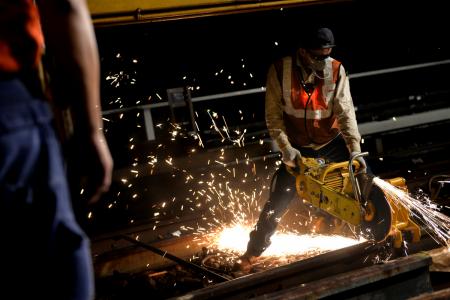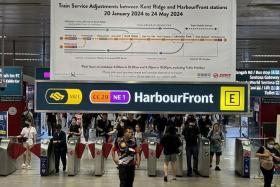Higher MRT frequency = more repair time needed
The replacement of MRT rail junctions requires more time now than before because of higher service frequency and competing works that are going on after revenue service.
At a briefing to explain why a number of stations along the East-West Line will close earlier from April 14, operator SMRT said on Friday such replacement works could previously be completed after operating hours.
But that is no longer feasible.
SMRT Trains deputy director of permanent way projects Kelvin Tan said typically, engineers would lock up the switching rail at a junction - the part which moves to allow trains to switch to another direction - for the entire day to facilitate the replacement work.
Trains at a terminal station would then have to turn around at another nearby junction, something which takes a bit more time.
When trains were running at a lower frequency "four to five years ago", this was manageable.
QUEUE OF TRAINS
But Mr Tan said locking up a junction today would cause a long queue of trains and unacceptable delays.
He added that other projects, such as re-signalling and third-rail replacement, meant that there were shorter windows for the junction replacement works.
Mr Tan said engineering hours - the time after the last train pulls into the depot and the first train starts running in the morning - have "always been insufficient".
"But because of all the other activities today, things have become even tighter," he said.
This is why SMRT is ending service between Lakeside and Joo Koon, as well as between Tanah Merah and Changi Airport, earlier at 11pm on April 14 and 21 (Lakeside-Joo Koon), and April 28 and May 5 (Tanah Merah-Changi Airport). Shuttle buses will be provided at these stations instead.
Get The New Paper on your phone with the free TNP app. Download from the Apple App Store or Google Play Store now



